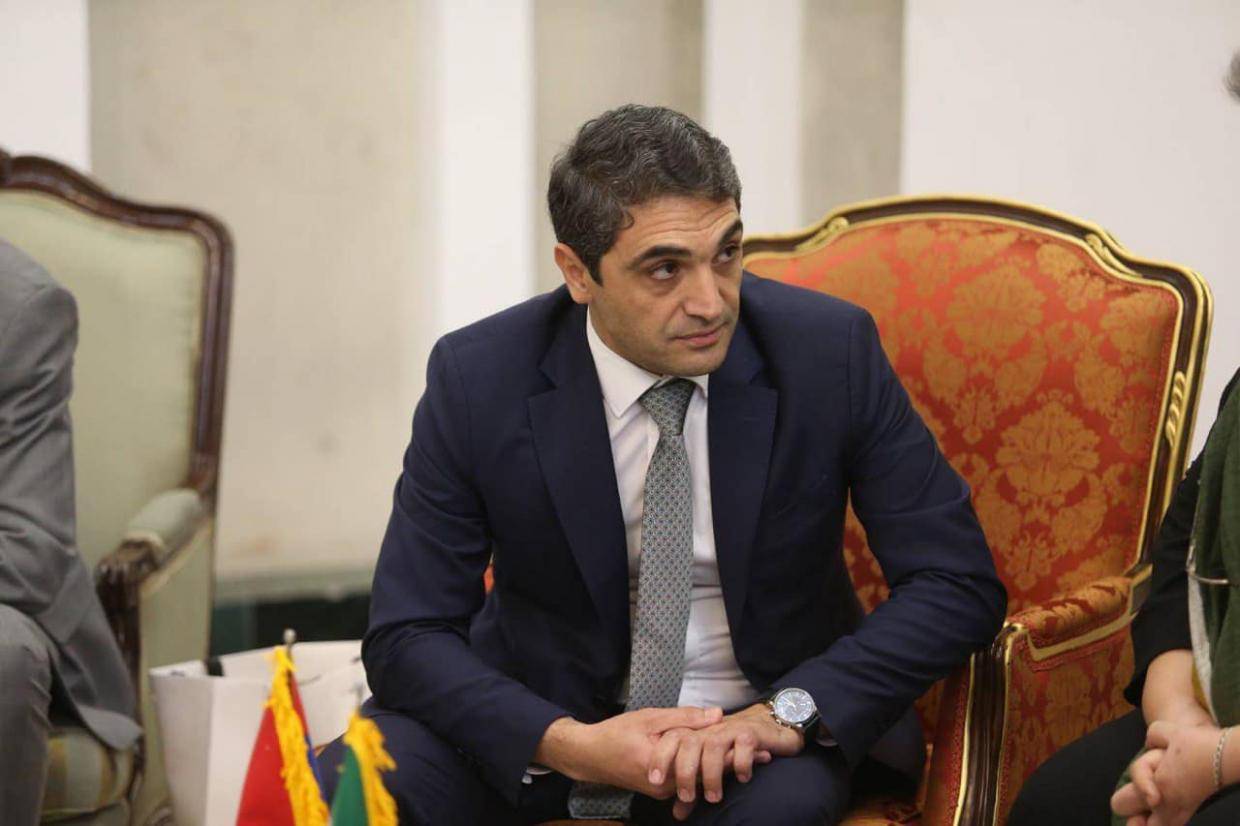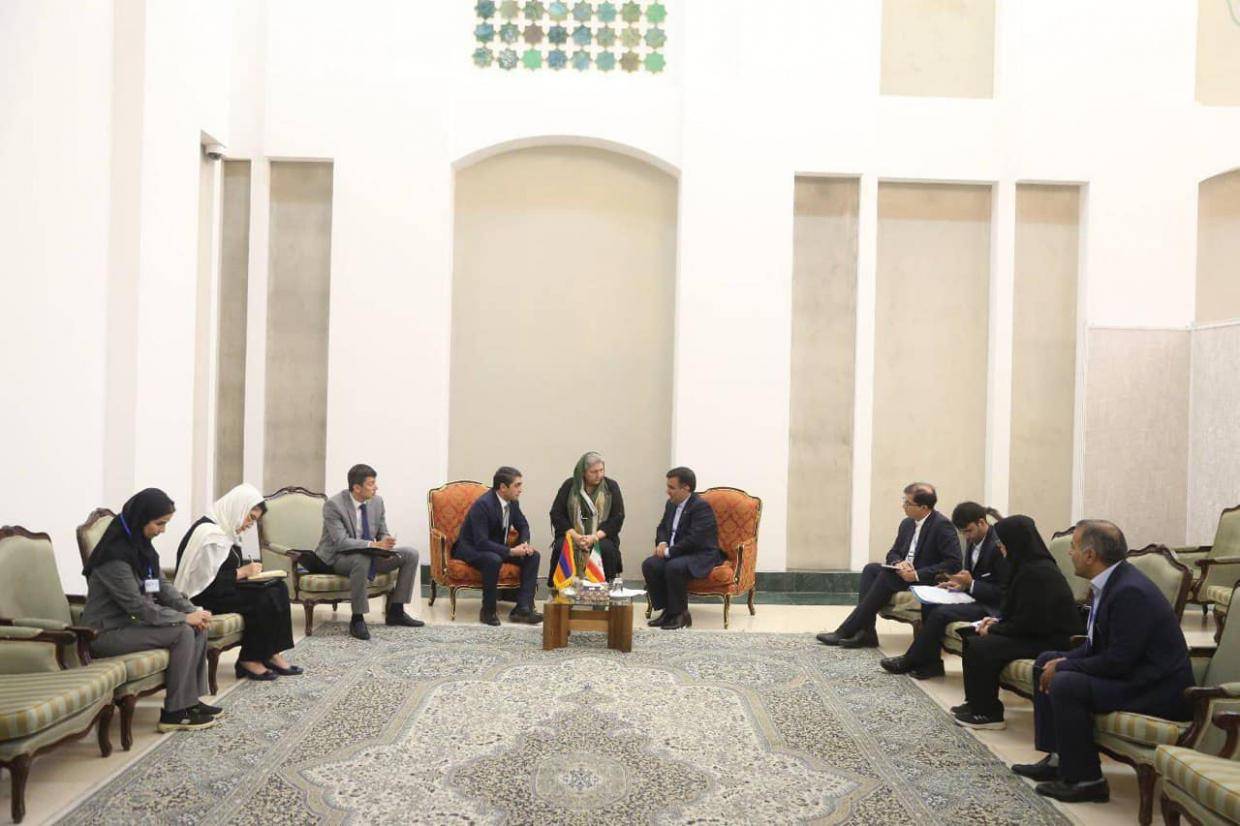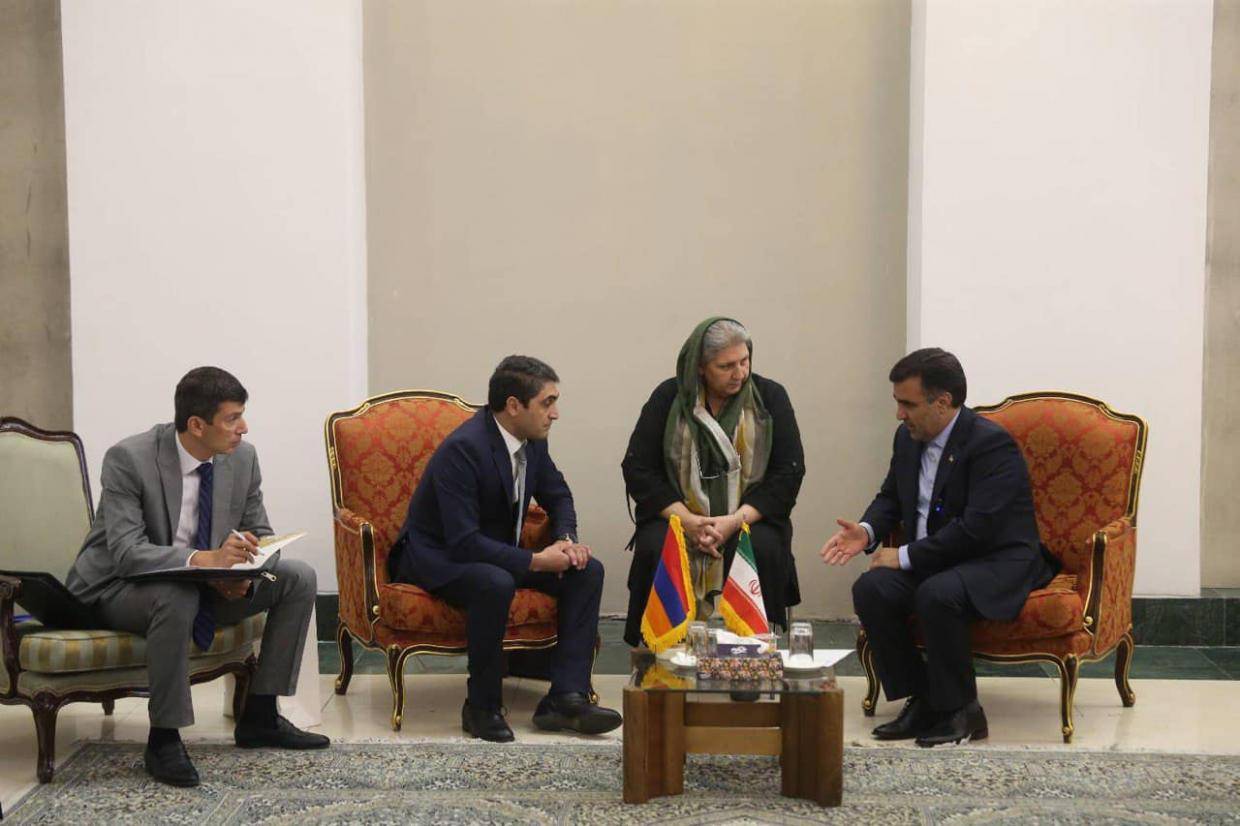Iran's Environmental Guardians: A Deep Dive Into The DoE
Table of Contents
- The Genesis of Environmental Stewardship: From Hunting Club to National Mandate
- Structure and Mandate: The Department of Environment Iran's Core Role
- Leadership and Vision: Navigating Iran's Environmental Landscape
- Pressing Challenges and Strategic Responses
- Proactive Measures and Conservation Triumphs
- The Importance of Environmental Advocacy in Iran
- Fostering a Sustainable Future: The Department's Ongoing Commitment
- Conclusion: A Legacy of Conservation and a Path Forward
The Genesis of Environmental Stewardship: From Hunting Club to National Mandate
The story of the Department of Environment Iran is one of remarkable transformation, illustrating a growing national awareness of ecological preservation. Its origins are surprisingly humble, tracing back to the establishment of the **Hunting Club of Iran in 1956**. Initially, this club was primarily focused on regulating hunting practices and protecting wildlife, reflecting a nascent understanding of the need for managed interaction with nature. Over time, as environmental challenges became more pronounced and the global conservation movement gained momentum, the scope of this organization expanded significantly. What began as a body overseeing hunting and fishing activities gradually evolved into a more comprehensive environmental agency. This evolution was spurred by increasing awareness of the broader ecological issues facing the country, from deforestation and pollution to water scarcity and biodiversity loss. A pivotal figure in this crucial transition was **Eskandar Firouz**, a charismatic aristocrat and big-game hunter who is widely credited with laying the groundwork for Iran's modern environmental movement. Through his vision and dedication, the newly created Department of Environment emerged, transforming a regulatory body for sport into a national institution with a mandate to safeguard the entire spectrum of Iran's natural resources. This historical progression underscores a fundamental shift in perspective, recognizing that environmental protection is not merely about managing individual species but about preserving entire ecosystems for future generations.Structure and Mandate: The Department of Environment Iran's Core Role
At its core, the **Iranian Department of Environment** (DoE) is a governmental organization, signifying its integral role within the state apparatus. Its direct supervision by the President of Iran underscores the high-level importance placed on environmental issues within the country's governance structure. This direct reporting line ensures that environmental concerns can be elevated to the highest political echelons, facilitating greater coordination and resource allocation for conservation efforts. The primary mandate of the DoE is unequivocally clear: it is responsible for all matters related to safeguarding the environment. This broad responsibility encompasses a wide array of critical areas, including but not limited to: * **Biodiversity Conservation:** Protecting Iran's rich flora and fauna, including endangered species and their habitats. This involves establishing protected areas, implementing anti-poaching measures, and supporting wildlife research. * **Pollution Control:** Addressing air, water, and soil pollution through regulatory frameworks, monitoring, and enforcement. This includes industrial emissions, urban waste management, and agricultural run-off. * **Water Resource Management:** Working to ensure sustainable use of water, particularly crucial in an arid region like Iran, by addressing issues such as wetland degradation, groundwater depletion, and water quality. * **Climate Change Adaptation and Mitigation:** Developing strategies to cope with the impacts of climate change and contributing to global efforts to reduce greenhouse gas emissions. * **Environmental Education and Awareness:** Promoting public understanding and participation in environmental protection through educational programs and campaigns. The central headquarters of the Department of Environment Iran are located in the capital city, Tehran, specifically at the northern side of Shahid Hakim Highway, between Sheikh Fazlollah and Yadegar Imam, within Pardisan Nature Park. This strategic location, nestled within a significant green space, symbolically reinforces the department's commitment to nature and serves as a hub for its nationwide operations. The DoE's comprehensive mandate reflects a recognition that environmental health is intrinsically linked to public health, economic stability, and national security, positioning it as a vital institution for Iran's sustainable development.Leadership and Vision: Navigating Iran's Environmental Landscape
Effective environmental governance hinges significantly on the vision and leadership guiding the responsible institutions. The **Department of Environment Iran** has been led by various prominent figures throughout its history, each contributing to its evolving mandate and strategic direction. These leaders often face the complex task of balancing environmental protection with economic development, social needs, and political realities. One notable figure from the past, for instance, was Masoumeh Ebtekar, who made significant remarks on environmental issues during her tenure, often engaging with the press on occasions like World Environment Day. Currently, the leadership of the Department of Environment Iran is vested in a key political figure who also holds the rank of Vice President, underscoring the importance of environmental issues within the presidential administration. This dual role provides direct access to high-level decision-making processes and facilitates greater influence on national policy.Shina Ansari: A Profile in Environmental Leadership
**Shina Ansari**, born in 1972, stands as a prominent Iranian politician and environmentalist currently at the helm of the Department of Environment Iran. Her appointment as Vice President and head of the DoE highlights a significant commitment to environmental affairs at the highest levels of government. She is also notably one of three female members in President Masoud Pezeshkian's cabinet, marking a significant representation of women in senior governmental roles. Ansari's academic background further strengthens her credentials for this demanding position. She holds a PhD in Environmental Management from the Islamic Azad University, providing her with a deep theoretical and practical understanding of complex ecological issues and sustainable development strategies. Her expertise is crucial in guiding the Department of Environment Iran through its multifaceted challenges. **Personal Data & Biodata: Shina Ansari**| Attribute | Detail |
|---|---|
| Full Name | Shina Ansari |
| Year of Birth | 1972 |
| Nationality | Iranian |
| Current Position | Vice President of Iran; Head of the Department of Environment Iran |
| Academic Background | PhD in Environmental Management from Islamic Azad University |
| Cabinet Role | One of three female members in President Masoud Pezeshkian's cabinet |
Pressing Challenges and Strategic Responses
Iran, like many nations, faces a myriad of complex environmental challenges, exacerbated by climate change, population growth, and decades of unsustainable practices. The **Department of Environment Iran** is at the forefront of confronting these issues, which range from severe water scarcity and air pollution in major cities to the degradation of vital ecosystems. The scale of these problems often requires innovative solutions, robust policy implementation, and collaborative efforts both domestically and internationally.The Plight of Wetlands: A Case Study in Fars Province
One of the most critical environmental crises highlighted by the Department of Environment Iran is the worsening condition of wetlands across the country. Shina Ansari herself has described the situation of wetlands in Fars Province, located in the south of Iran, as "tragic, alarming, and unbearable." This stark assessment underscores the severity of the issue. The degradation of these vital ecosystems, which play crucial roles in water purification, flood control, and biodiversity support, has been attributed to "four decades of neglect and failure to allocate environmental" resources adequately. The decline of wetlands is often a symptom of broader water management issues, including excessive dam construction, agricultural over-extraction, and prolonged droughts. The DoE's focus on this issue in Fars Province indicates a recognition of its ecological and economic importance, as healthy wetlands are essential for local livelihoods and regional ecological balance. Addressing this requires a multi-faceted approach, including: * **Restoration projects:** Implementing initiatives to revive dried-up wetlands. * **Sustainable water management:** Promoting efficient irrigation and reducing water consumption in agriculture. * **Policy enforcement:** Ensuring that environmental regulations regarding water use are strictly followed. * **Public awareness:** Educating local communities about the value of wetlands and encouraging their participation in conservation. The challenge of wetland degradation is a significant test for the Department of Environment Iran, demanding both immediate intervention and long-term strategic planning to reverse the trends of decline.Transboundary Environmental Diplomacy: The Hamoun Lake Initiative
Environmental issues often transcend national borders, requiring international cooperation for effective resolution. A prime example of this is the challenge posed by Hamoun Lake, a transboundary wetland system shared by Iran and Afghanistan. The drying up of Hamoun Lake has led to severe dust storms, impacting public health and livelihoods in both countries. Recognizing this shared environmental crisis, the chief of Iran's Department of Environment (DoE) and the director-general of Afghanistan's National Environmental Protection Agency have engaged in discussions to address the issue. This collaboration highlights a key tenet of the DoE's approach, as articulated by Shina Ansari: "addressing environmental concerns is essential, irrespective of political challenges, as global collaboration cannot occur without the involvement of every nation." This statement underscores the department's commitment to prioritizing environmental well-being over political differences when it comes to shared ecological resources. Diplomatic efforts, such as those concerning Hamoun Lake, involve: * **Joint research and monitoring:** Sharing data and scientific expertise to understand the ecological dynamics of the lake. * **Negotiating water-sharing agreements:** Developing equitable and sustainable frameworks for managing the shared water resources that feed the lake. * **Implementing joint restoration projects:** Collaborating on initiatives to revive the lake and its surrounding ecosystems. * **Capacity building:** Supporting each other in developing the technical and institutional capacities needed for environmental management. The Hamoun Lake initiative is a testament to the **Department of Environment Iran's** understanding that some of the most critical environmental problems require a global perspective and a willingness to engage in complex, cross-border diplomacy to achieve lasting solutions.Proactive Measures and Conservation Triumphs
Beyond responding to crises, the **Department of Environment Iran** is actively engaged in proactive measures and has achieved notable successes in various conservation areas. These initiatives reflect a forward-thinking approach to environmental stewardship, aiming not only to mitigate damage but also to foster sustainable development and protect Iran's unique natural heritage for future generations. One remarkable achievement that demonstrates the department's commitment to sustainable energy is its progress in renewable energy. The head of the Human Resources Development and Support Center of the Department of Environment Iran recently announced a significant milestone: the DoE fulfilled its five-year commitment to supplying its electricity consumption from renewable energy sources in just one month. This extraordinary accomplishment showcases a strong internal drive towards green energy and sets a powerful example for other governmental bodies and industries within the country. Such rapid adoption of renewable energy sources contributes directly to reducing carbon footprints and promoting a cleaner energy future for Iran. Furthermore, the Department of Environment Iran is deeply involved in biodiversity conservation, particularly focusing on the protection of endangered species. A significant area of its work is the active protection of endangered migratory birds. Iran lies along major migratory bird routes, making it a crucial stopover and wintering ground for numerous species. The DoE implements various measures to safeguard these birds, including: * **Establishing and managing protected areas:** Designating and overseeing wetlands and coastal areas as sanctuaries for migratory birds. * **Combating illegal hunting and poaching:** Enforcing strict laws and deploying rangers to protect bird populations. * **Monitoring bird populations:** Conducting surveys and research to track the health and numbers of different species. * **International cooperation:** Collaborating with international organizations and neighboring countries to ensure the safe passage and protection of migratory birds across their entire range. In addition to these specific initiatives, the Department of Environment Iran has been instrumental in bringing various "environmental MOUs" (Memoranda of Understanding) into effect. These agreements, often forged with other ministries, provinces, or international partners, signify a collaborative approach to environmental governance. They can cover a wide range of topics, from joint research projects and technology transfer to shared conservation programs and policy coordination. These MOUs are vital tools for leveraging resources, expertise, and political will to tackle complex environmental challenges more effectively. These proactive measures and conservation triumphs underscore the **Department of Environment Iran's** multifaceted efforts to not only react to environmental degradation but also to lead by example, innovate, and build a more sustainable and resilient Iran.The Importance of Environmental Advocacy in Iran
The work of the **Department of Environment Iran** extends beyond policy implementation and conservation projects; it fundamentally involves robust environmental advocacy. In a nation grappling with diverse socio-economic and political priorities, the DoE plays a critical role in elevating environmental concerns to the national agenda and fostering a broader public understanding of their urgency. As emphasized by Shina Ansari, the head of the Department of Environment Iran, "environmental issues must be addressed regardless of political matters." This statement is a powerful call for depoliticizing environmental action, asserting that the health of the planet and its inhabitants should transcend partisan divides. This advocacy is crucial because: * **It builds consensus:** By framing environmental protection as a universal good, the DoE can garner support from various stakeholders, including government bodies, industries, local communities, and non-governmental organizations. * **It influences policy:** Through consistent advocacy, the department can push for stronger environmental laws, more effective enforcement mechanisms, and greater allocation of resources for conservation. * **It raises public awareness:** The DoE actively engages in public education campaigns, utilizing media and community outreach to inform citizens about environmental challenges and encourage sustainable behaviors. This includes promoting responsible consumption, waste reduction, and water conservation. * **It fosters international cooperation:** By advocating for the universality of environmental concerns, the DoE strengthens Iran's position in global environmental forums, facilitating partnerships and knowledge exchange on issues like climate change and transboundary pollution. The DoE's role in shaping public discourse and policy is paramount. It acts as a voice for nature, ensuring that the long-term health of Iran's ecosystems is not overshadowed by immediate economic or political considerations. This continuous advocacy is essential for cultivating a culture of environmental responsibility and ensuring that the principles of sustainability are embedded across all sectors of Iranian society. The effectiveness of the Department of Environment Iran is, in many ways, measured by its ability to not only implement programs but also to inspire a collective commitment to environmental stewardship among all Iranians.Fostering a Sustainable Future: The Department's Ongoing Commitment
The journey towards environmental sustainability is a continuous one, fraught with evolving challenges and demanding persistent innovation. For the **Department of Environment Iran**, the commitment to fostering a sustainable future for the nation is an ongoing mission that requires long-term vision, adaptive strategies, and resilient implementation. The department's work is not merely about reacting to existing problems but about proactively shaping a future where human development coexists harmoniously with nature. Key aspects of the DoE's ongoing commitment include: * **Strengthening Environmental Governance:** This involves refining existing environmental laws, developing new regulations to address emerging threats, and enhancing the capacity for monitoring and enforcement across all sectors. The goal is to create a robust legal and institutional framework that supports sustainable practices. * **Investing in Green Technologies:** As demonstrated by their rapid adoption of renewable energy for their own consumption, the Department of Environment Iran is keen on promoting and facilitating the use of environmentally friendly technologies across industries. This includes supporting research and development in areas like waste-to-energy solutions, water purification, and sustainable agriculture. * **Enhancing Public Participation:** Recognizing that environmental protection is a shared responsibility, the DoE aims to further empower local communities, NGOs, and civil society organizations to participate actively in conservation efforts. This includes citizen science initiatives, community-led restoration projects, and public consultations on environmental policies. * **Adapting to Climate Change:** Iran is particularly vulnerable to the impacts of climate change, including increased droughts, desertification, and extreme weather events. The DoE is focused on developing and implementing adaptation strategies to build resilience in vulnerable communities and ecosystems, alongside contributing to national efforts to mitigate greenhouse gas emissions. * **Promoting International Collaboration:** Understanding that many environmental issues are global in nature, the Department of Environment Iran continues to seek and strengthen partnerships with international organizations, neighboring countries, and global environmental initiatives. This collaborative spirit is vital for addressing transboundary issues and sharing best practices. The challenges facing Iran's environment are formidable, from persistent water crises and air pollution in urban centers to the degradation of forests and wetlands. However, the dedicated efforts of the **Department of Environment Iran**, guided by scientific expertise and strong leadership, indicate a clear path forward. By focusing on integrated management, innovation, and broad societal engagement, the DoE strives to ensure that Iran's rich natural heritage is preserved and that the nation embarks on a truly sustainable development trajectory for generations to come.Conclusion: A Legacy of Conservation and a Path Forward
The **Department of Environment Iran** stands as a pivotal institution in the nation's ongoing battle for environmental preservation. From its unexpected origins as a hunting club in 1956, evolving under the vision of figures like Eskandar Firouz, it has transformed into a comprehensive governmental organization directly supervised by the President, with a broad mandate to safeguard Iran's diverse ecosystems. Under the leadership of environmentalists like Shina Ansari, the DoE tackles pressing issues such as wetland degradation and transboundary water disputes, advocating for environmental concerns to transcend political divides and foster global collaboration. The department's proactive measures, exemplified by its swift adoption of renewable energy and its dedicated protection of endangered migratory birds, underscore a forward-thinking approach to conservation. While significant challenges remain, the Iranian Department of Environment continues to demonstrate its unwavering commitment to sustainable development, aiming to protect Iran's natural heritage for future generations. Its work is a testament to the growing recognition that environmental health is inseparable from national well-being. **What are your thoughts on Iran's environmental challenges and the role of the Department of Environment? Share your insights in the comments below, or explore more articles on global environmental initiatives on our site!**
Armenian Environment minister met with the Head of the Department of

Armenian Environment minister met with the Head of the Department of

Armenian Environment minister met with the Head of the Department of